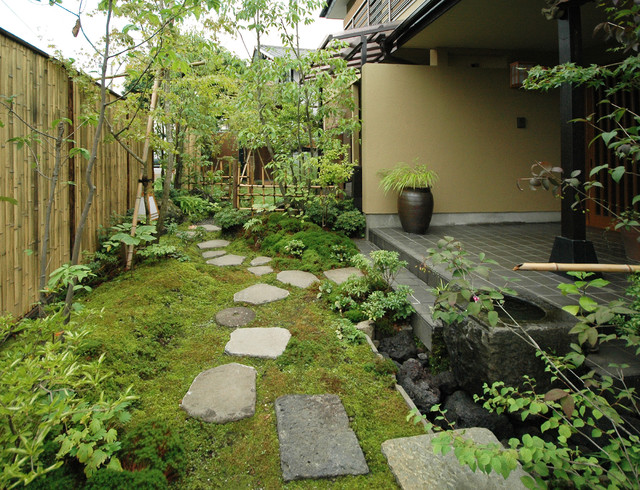 生活空間計画室 旭華園
生活空間計画室 旭華園 株式会社 小池造園
株式会社 小池造園Most Japanese gardens make use of naturalistic building materials like large steppingstones, bamboo, hardwoods, gravel and sand. Contemporary landscapes may combine the traditional materials with more modern ones like concrete and concrete aggregate.
Pathways, courtyards, planting beds and other garden elements are laid out to promote balance in the landscape. Unlike classical European gardens that favor symmetry, Japanese gardens often achieve balance through asymmetry. For example, if a large boulder is placed on one side of a pathway, a tree is often placed on the other to promote balance of form.
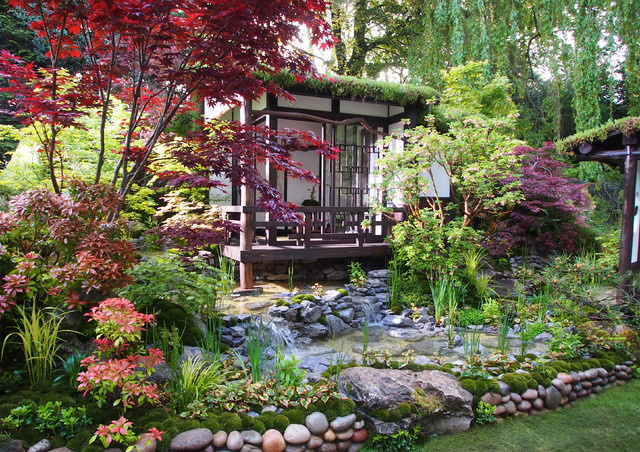
Teahouses. Traditionally, a Japanese teahouse surrounded by a naturalistic garden is a sacred space for conducting a tea ceremony. Although the ceremony itself may not be a part of your tradition, most of us can relate to the appeal of an outdoor room designated for peace, calm and reflection.
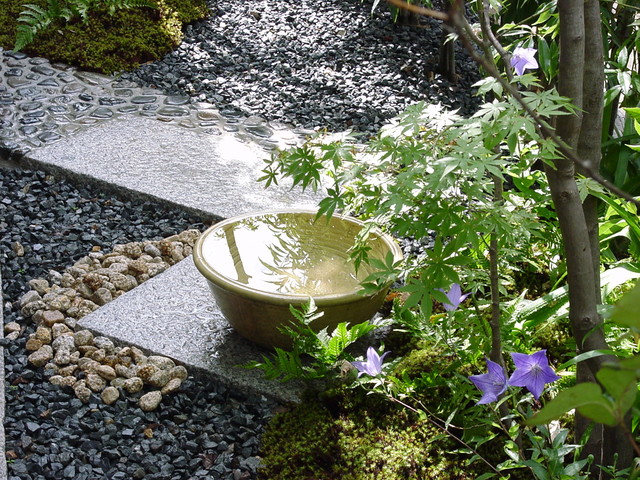
A Beginner’s Guide to the Japanese Tea Garden
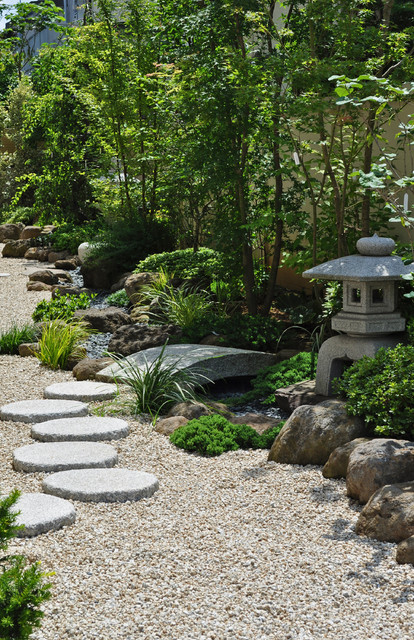 造園・庭造り専門店【新美園】
造園・庭造り専門店【新美園】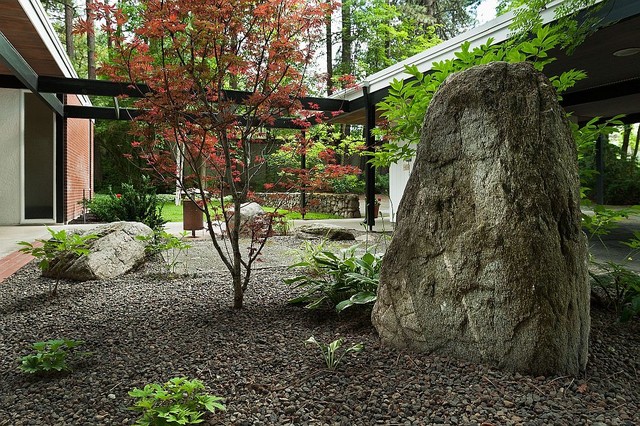
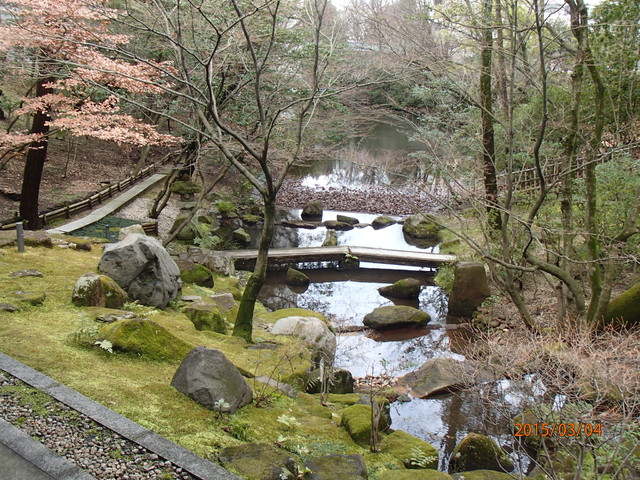 Taketo Shoten Co., Ltd.
Taketo Shoten Co., Ltd.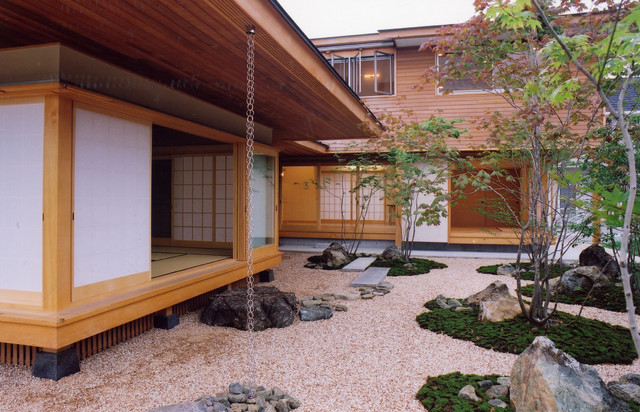
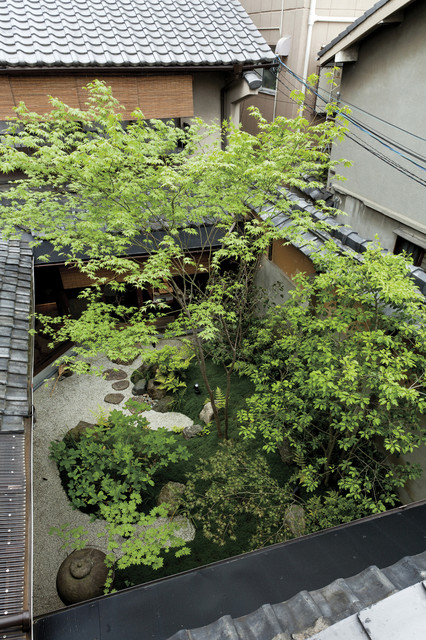 WA-SO design -有限会社 和想-
WA-SO design -有限会社 和想-Japanese maples. The graceful branch forms and delicate leaves of Acer palmatum have long been cherished by Japanese gardeners. The trees stay relatively small — 15 to 25 feet, smaller with pruning —making them beautiful additions to smaller backyards or courtyard gardens. Choose from varieties with leaf colors ranging from chartreuse to plum.
11 Japanese Maples for Breathtaking Color and Form
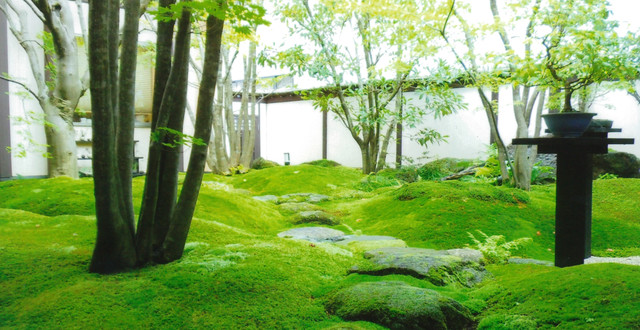
The Joy of Moss and Its Modern Uses
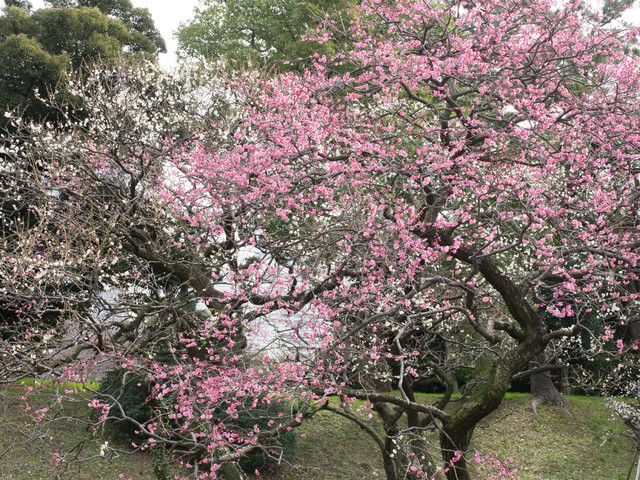
7 Spectacular and Practical Spring-Flowering Trees

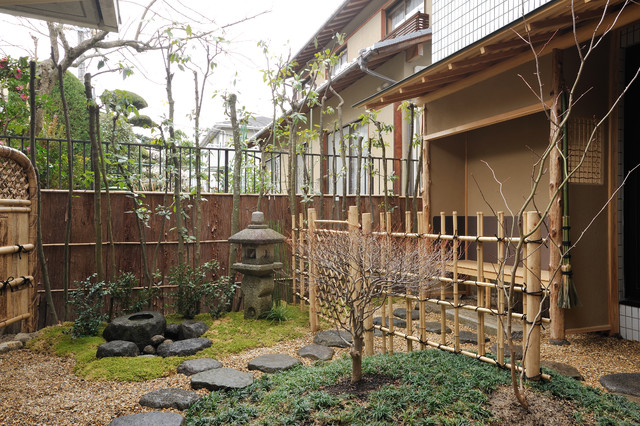 岩崎建築研究室
岩崎建築研究室Lanterns. Traditional Japanese lanterns either hang from the eaves of a home or temple, or rest on a pedestal on the ground. Lanterns on the ground are more common, often not lit but rather used as garden sculptures or focal points.
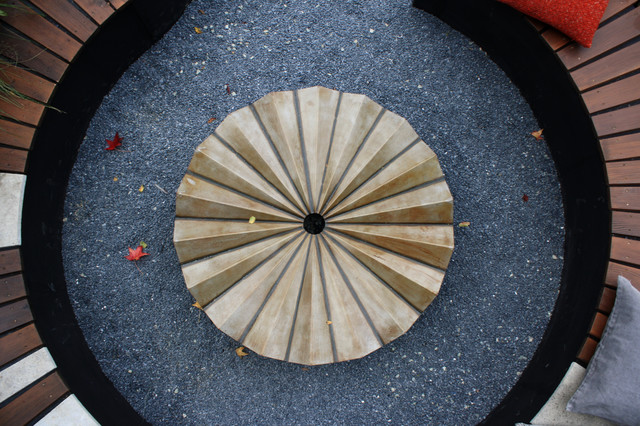




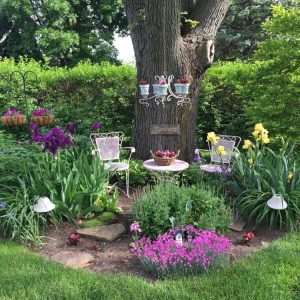


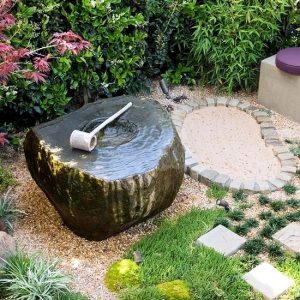

Much as a Japanese brush painting captures the essence of a landscape scene in a few brushstrokes, Japanese gardens emulate the natural world in a stylized way. Inspiration for plant choices, color and form comes from the country’s native forests, lush streambeds and towering mountains. Dark stones, bright and deep greens, and earthy browns and sandy tones are the most common colors, but many gardens also have one or two accents of red or other vivid hues. Further imitating the natural landscape, traditional Japanese gardens often include a subtle change in topography, such as mounds to symbolize hills, or depressions for valleys.